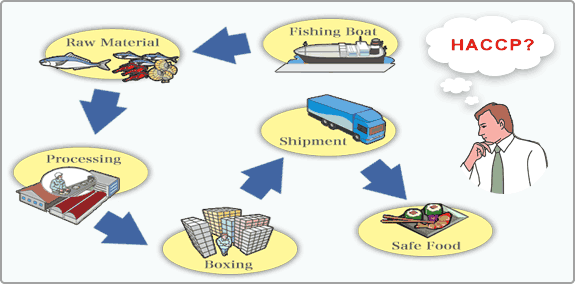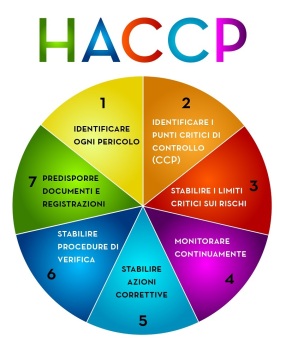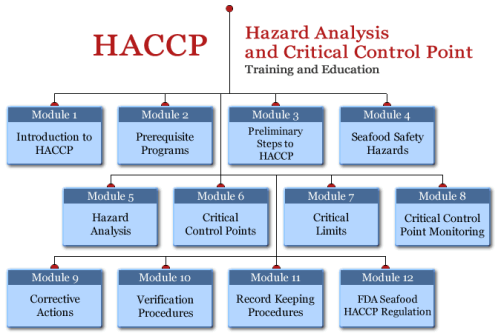The Cutting Edge of Medical Technology Content, Community & Collaboration
Hazard Analysis and Critical Control Point (HACCP) is an important system aimed at bringing down the risk of safety hazards found in food consumed all over the world. It is an internationally recognized system. When it was enacted in January 2011 as part of the FDA’s Food Safety Modernization Act; it was considered a very sweeping piece of legislation for the food industry.

Identification and control of potential hazards at specific point of the food chain is the soul of an HACCP system. The chain starts with production and ends with consumption. Identifying and controlling these hazards at every point of the chain is challenging in today’s world in which food has become completely globalized.
HACCP suggests the putting in place of mechanisms to control and counter the biological, chemical or physical hazards that could be present or be a potential presence in the food. The HACCP system is designed in such a way such that a company that manufactures, processes, or handles food products in any form can use HACCP for eliminating or minimizing food safety hazards present in its product to acceptable levels.
Implementation is based on two approaches
Proper implementation of the HACCP program involves food companies to implement both these:
- Prerequisite programs
- Implementation of HACCP plans
Prerequisite programs:
Prerequisite programs are those programs that a food organization has to put in place at its facility to ensure that all the processes that go into preventing contamination, ensuring a hygienic environment, and the optimal and scientific use of manufacturing methods and technologies and the cleanliness and hygiene of the staff involved in the production of food are proper and compliant.

Implementation of HACCP plans:
If the prerequisite programs are required at the manufacturer-specific location; many steps and processes need to go into ensuring the quality standards of food that goes out of the facility. HACCP has suggested as many as seven steps for food is free from contamination. These are part of HACCP plans.
These include:
- Conducting a hazard analysis
- Identifying the critical control points
- Establishing a maximum or minimum limit for temperature, time, pH, salt level, chlorine level or other processing characteristics that control the hazard
- Establishing Critical Limits
- Establishing Monitoring Procedures
- Establishing Corrective Actions
- Establishing Record Keeping Procedures and Verification Procedures
Risk based preventive control is a major component of HACCP
HACCP has placed a heavy emphasis on risk in the production and transportation of food. It requires risk based preventive control. Codex Alimentarius describes risk assessment as a scientific process that takes the identification of a hazard, its characterization, assessment of the exposure to it, and characterization of risk into consideration.
Risk assessment is part of risk analysis, which in turn is described as a process into which three aspects, namely risk management, risk assessment and risk communication go. So, HACCP requires food manufacturers and transporters to take the risk causing factors into consideration at work. All these become part of risk based preventive controls.
Get the confusion cleared in implementing a risk based HACCP program
To clear the confusions in the meaning of these terms and to teach the ways of implementing them, Compliance4All, a leading provider of professional trainings for all the areas of regulatory compliance, will be organizing a webinar. This webinar will clear the misunderstanding between these terms and show ways by which to implement a risk based HACCP program and ways of getting it right.

Rotimi Toki, who is principal of Rottoks Food Safety Management Consulting Services Limited, will be the speaker at this webinar. Rotimi has provided services to some of the top brands in food service and manufacturing sectors and specializes in Quality Systems Audit, developing an integrated food safety management system based on HACCP principles. In order to gain complete understanding of the ways by which you can adapt and implement a risk based HACCP program, please register for this webinar by visiting Background of The HACCP system
Step-by-step method of developing an HACCP program
Rotimi will present a step-by-step process for developing an effective HACCP program. He will elucidate the principles and specific steps needed for this, for this is a prerequisite to building such a program. Through this process, Rotimi will show how participants can build a plan that can identify and control food safety hazards and risks specific to their product line and processes.
He will show how to determine the significance of these hazards by applying risk assessment techniques, from which a measure of risk can be obtained. This measure allows users to put appropriate control measures in place. He will clarify on the various confusions and weaknesses present in many food safety standards surrounding the determination of control measures required by HACCP.
Rotimi will cover the following areas at this webinar:
- Background of The HACCP system
- The CODEX Guidelines
- Basic HACCP procedures
- Assemble the HACCP Team
- Describe product and identify intended use
- Construct flow diagram and on-site confirmation of flow diagram
- Hazard Analysis
- Determining control measures in HACCP
- Establish Critical Limits for each CCP
- Establish a monitoring system for each CCP
- Establish Corrective Actions
- Verification procedures
- Documentation and record keeping
- Post-HACCP Maintenance
Views: 14
Comment
© 2025 Created by CC-Conrad Clyburn-MedForeSight.
Powered by
![]()
You need to be a member of MedTech I.Q. to add comments!
Join MedTech I.Q.